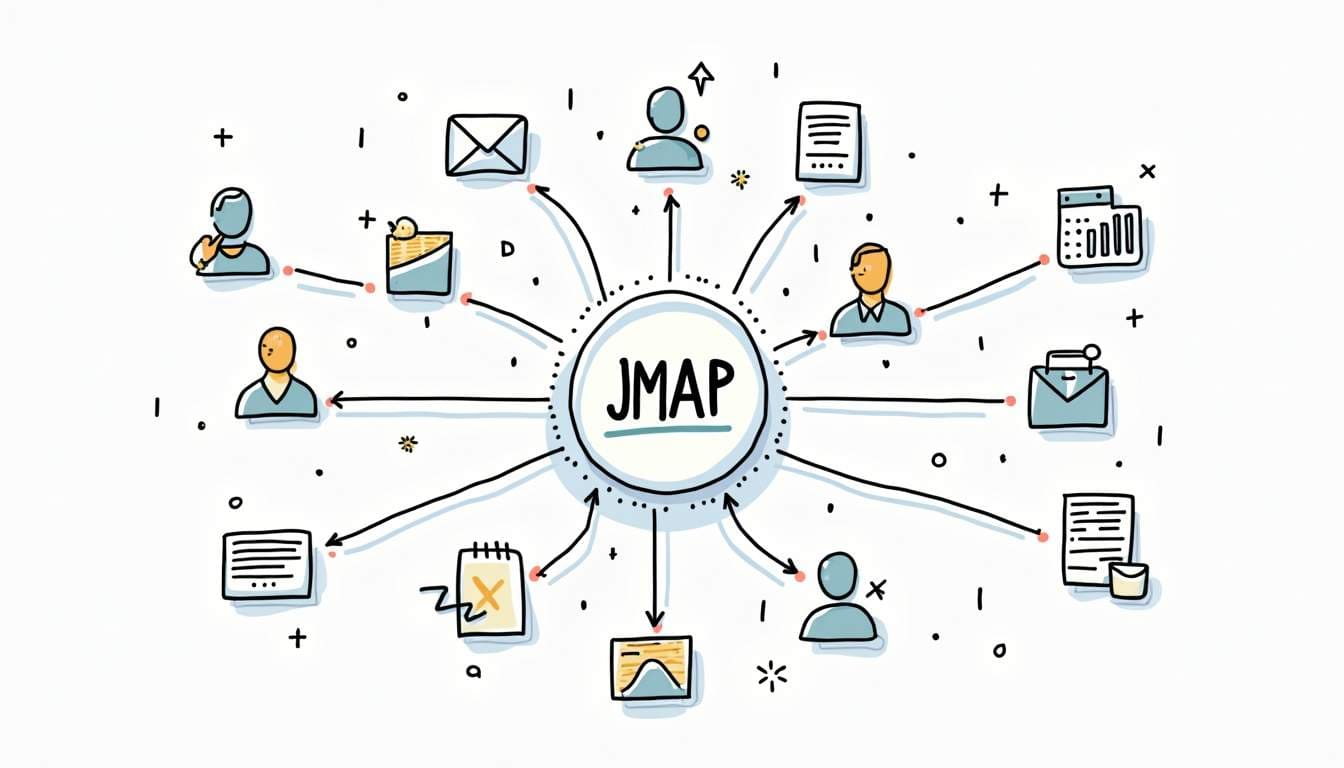In today's digital world, acronyms and abbreviations are ubiquitous. Among them, JMAP is a term worth exploring. But what does JMAP really mean? This article aims to decode this acronym, explore its context, and discuss its use in the field of technology, particularly in open-source messaging and professional email management.

Définition of JMAP
JMAP, or JSON Meta Application Protocol, is an open-source protocol designed to facilitate access to Jmap mail services. It was developed to meet the growing needs of modern web applications that require seamless interaction with enterprise mail servers.
This open-source software allows developers to create applications that can efficiently manage professional emails, offering features such as real-time synchronization, folder management, and message manipulation. JMAP is therefore an essential tool for anyone looking to develop robust and free open-source messaging solutions.
Origin of JMAP
JMAP was introduced by a group of developers seeking to improve the limitations of existing mail protocols, such as IMAP and SMTP. While these protocols have long been the pillars of open-source email communication, they present challenges in terms of performance and compatibility with modern applications.
The creation of JMAP aimed to simplify these processes while integrating the best practices of open-source development. By using JavaScript, JMAP enables developers to leverage current web technologies, making development more accessible and efficient.
Additionally, JMAP adopts an open source data-centric approach, allowing applications to retrieve and manipulate information in a more structured manner. This means developers can not only access professional emails but also interact with associated metadata, such as contacts and calendar events, enriching the user experience.
Key Features of JMAP
JMAP's features are varied and tailored to the needs of modern users, particularly in enterprise software. Here are some of the most notable characteristics:
Real-Time Synchronization
One of JMAP's main features is its ability to synchronize data in real-time. This means users can receive instant notifications when a new open-source email arrives, without manually refreshing their inbox.
This feature significantly enhances the user experience, providing smooth and uninterrupted interaction with professional emails. Thanks to JMAP, teams can benefit from instant free messaging, facilitating quick decision-making and task organization.
Folder and Message Management
JMAP also enables efficient management of folders and messages. Users can organize their professional emails into specific folders, mark them as read or unread, and even easily delete or archive them.
Moreover, JMAP offers advanced features like integrated search within folders, allowing users to quickly find specific messages. This search capability is enhanced by customizable filters, enabling users to sort professional emails based on various criteria.
Benefits of JMAP
Adopting JMAP offers several advantages for developers and end-users, particularly those seeking a reliable open-source solution for managing professional emails. Here are some of the main benefits:
Improved Performance
JMAP is designed to be more performant than its predecessors. With its modern structure, it minimizes the number of requests needed to perform common actions, reducing latency and improving the responsiveness of enterprise messaging applications.
Ease of Integration
Another key advantage of JMAP is its ease of integration with other web technologies. Being JavaScript-based, it can be easily used with popular frameworks, allowing developers to leverage existing enterprise software to create open-source messaging solutions.
Enhanced Security
JMAP integrates modern security mechanisms, such as OAuth authentication and data encryption, ensuring the protection of users' sensitive information, particularly in the context of professional emails.
Practical Applications of JMAP
JMAP finds applications in various domains, ranging from personal messaging services to open-source enterprise messaging solutions. Here are some examples:
Personal Messaging Services
Many open-source messaging service providers are adopting JMAP to enhance the user experience. For instance, applications like RainLoop and Nextcloud Mail use this protocol to offer a modern and responsive interface, suitable for managing personal and professional emails.
Enterprise Solutions
In the context of open-source enterprises, JMAP is used to develop robust messaging solutions. Companies can create custom applications that meet their specific needs while ensuring seamless integration with other productivity tools.
In summary, JMAP is a promising open-source protocol that addresses the growing needs of modern users in email messaging. Its ability to offer real-time synchronization, efficient message management, and improved performance makes it an ideal choice for developers looking to create innovative messaging applications. JMAP integrates seamlessly into the open-source ecosystem, making it a must-have for managing professional emails in a modern and collaborative work environment.

 Русский
Русский
